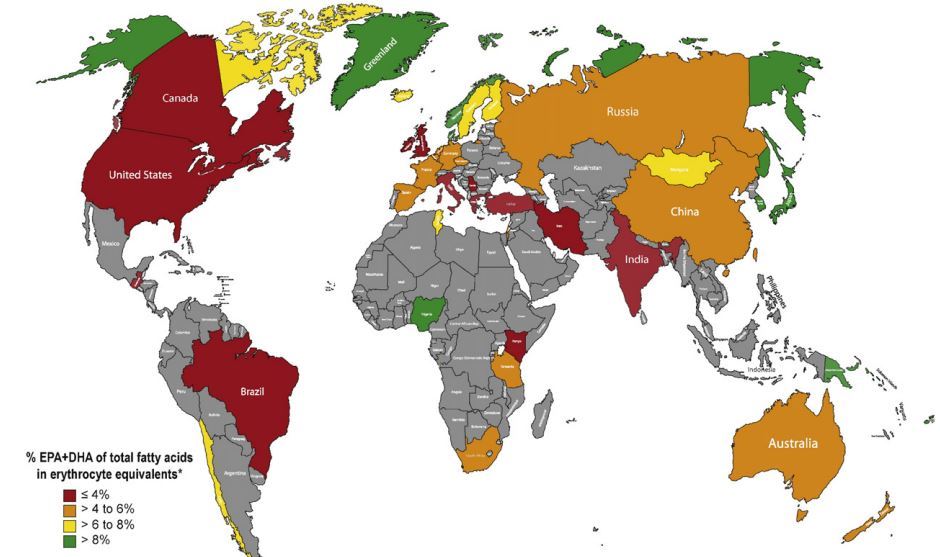Omega-3 levels are sub-optimal in 99 percent of Americans
Discrepancy between Knowledge and Perceptions of Dietary Omega-3 Fatty Acid Intake Compared with the Omega-3 Index
Nutrients 2017, 9(9), 930; doi:10.3390/nu9090930
Sowmyanarayanan V. Thuppal 1, Clemens von Schacky 2, William S. Harris 3,4, Katherine D. Sherif 5, Nigel Denby 6, Suzanne R. Steinbaum 7, Bryan Haycock 8,† and Regan L. Bailey 9,*
📄 Download the PDF from VitaminDWiki
Omega-3 index for Americans (pink is sub-optimal)

Little is known about the relationship between perceptions of nutrient adequacy and biomarkers of nutrition status. This cross-sectional study of U.S. and German adults (n = 200; 18–80 years) compared dietary practices, knowledge, and beliefs of omega-3 fatty acids (O3-FA) with the omega-3 index (O3-I), an erythrocyte-based biomarker associated with cardiovascular disease (CVD) risk. More than half of adults believed that O3-FAs are beneficial for heart and brain health and could correctly identify the food sources of O3-FA. However, the mean O3-I in the U.S. (4.3%) and Germany (5.5%) puts the majority of adults sampled (99%) in intermediate or high CVD-risk categories. More Americans were considered at high CVD-risk (40%) when compared with Germans (10%). In the U.S., but not Germany, women had a significantly higher O3-I than men (4.8% vs. 3.8%, p < 0.001). In the intermediate CVD-risk group, about one-third of adults in both countries (30% in the U.S. and 27% in Germany) believed their diet was adequate in O3-FA. Notably, mean O3-I concentrations did not significantly differ with dietary perceptions of adequacy. More adults in Germany (26%) than in the U.S. (10%) believed that dietary supplements are needed to achieve a balanced diet. In spite of adequate knowledge about food sources and a consistent belief that O3-FA are important for health, very few participants had O3-I concentrations in the range for CVD protection.
Their reference for > 8 is "Global survey of the omega-3 fatty acids . . . " 2016
Download the Global Survey PDF from VitaminDWiki
main page on VitaminDWiki =Omega-3 map (most of the world has low levels) – May 2016
Very few regions have "optimal levels" of Omega-3

